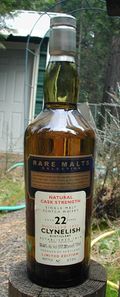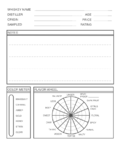Whisky
Legal definition of whisky according to United States Title 27, Volume 1:
"Whisky" is an alcoholic distillate from a fermented mash of grain,often including malt produced at less than 190 degrees proof in such manner that the distillate possesses the taste, aroma, and characteristics generally attributed to whisky, stored in oak containers (except that corn whiskey need not be so stored), and bottled at not less than 80 degrees proof, and also includes mixtures of such distillates for which no specific standards of identity are prescribed.
Spelling
The spelling whisky (plural whiskies) is generally used for those distilled in Scotland, Canada, and Japan, while whiskey (with an e; plural whiskeys) is used for the spirits distilled in Ireland and the United States; however, there are exceptions. A mnemonic used to remember which spelling is used is that "Ireland" and "United States" have at least one "e" in their names, while "Scotland," "Canada" and "Japan" do not. International law reserves the term "Scotch Whisky" to those whiskies produced in Scotland; whiskies produced in other countries in the Scotch style must use another name. Similar conventions exist for "Irish whiskey" and "Canadian whisky." The Welsh version is wysgi. The name evolved from the Gaelic uisge beatha (water of life). (Other countries also have their own "water of life": see the Danish Akvavit, whose name derives from the Latin aqua vitae.) Irish whiskey is typically distilled three times from a mash of several grains. Scottish whisky, properly called Scotch, is typically distilled twice, either from barley malt alone (see single malt whisky), or from barley malts and other grain malts which are then mixed together. Kentucky whiskey, called Bourbon, is normally only distilled once, as are most other American and Canadian whiskies.
Characteristics

Whisky is drunk straight, with water or ice, or mixed with other spirits or drinks (such as "Rye & Coke" or "Rye & Ginger Ale"). Whisky is sold in several styles. Malt whisky consists of whisky made from 100 percent malted grain, and malt whisky from one distillery, rather than blended, is called single malt. The grains used to make malt whisky include barley in Ireland, Scotland, Canada, and the United States, rye in Canada and the United States. Pure pot still whiskey is made in Ireland from a combination of malted and unmalted barley. Various types of straight whiskey, such as Rye Whisky, Tennessee Whiskey, and Bourbon Whiskey are produced in the U.S. which are aged in new, charred, oak barrels. Blended whisky is made from a combination of any of the above whiskies with the similar grain whisky or neutral grain spirits, which are much less expensive to produce than the other types of whisky. Blends will almost always identify the type of base whisky used, ie. blended Scotch, blended Canadian, or blended Bourbon. Light whiskey is a style of American whiskey made up almost entirely of neutral grain spirits, with small amounts (typically less than 5 - 10 percent total volume) of straight whiskey and sherry added for flavor and coloring. At one time much of the whiskey produced in the U.S. was "Bottled-in-Bond" according to the dictates of an 1898 Act of Congress; this practice has been largely discontinued, because one of the requirements of the Act was that such whiskey be produced at 100 U.S. alcoholic proof (50% alcohol by volume). Little whiskey this potent is produced in the U.S. anymore, partially because of changing public tastes but also because an alcoholic content so high is illegal in many countries, limiting the export market for it.
See also
- Bourbon whiskey
- Canadian whisky
- Corn Whiskey
- Irish whiskey
- Moonshine
- Rye whisky
- Scotch whisky
- Tennessee Whiskey
- List of Commercial Distilleries
Tasting Whiskey

As a distiller you should build your palate. This is so you can better understand good vs bad whiskey, reducing off flavors, and developing/mimicking grain bills. The tasting notes template will help you remember all the whiskeys (home and commercial). Then you can develop recipes that fit your liking. The two biggest parts to any whiskey is the nose, or the aromas it gives off, and the palate, the flavor. Most whiskeys nose differently than they taste. This is not a judgment of quality, but of the number of aroma and flavor constituents. Each person's palate is slightly different so each person will notice differences in intensity of flavors.
References:
- Master of Malt's Tasting Guide
- Youtube: How to Drink Whisky with Richard Paterson - Ignore the throwing the whiskey away. that's just wasteful.
- Compound Interest's "The Chemistry of Whisky" - Discusses the major flavor compounds found in whiskeys
- Lew Bryson's Tasting Whiskey